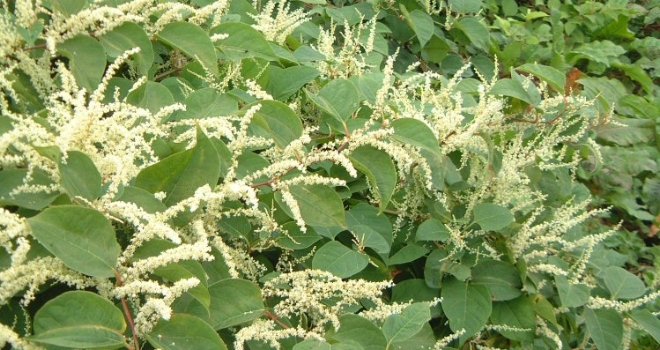
Japanese knotweed removal firm Environet has dealt with several cases so far this year where the invasive plant has been found growing on a new build properties, where the developer is reluctant to accept any responsibility for it.
The TA6 form, completed by sellers, contains a direct question about Japanese knotweed, asking whether they are aware of the property having been affected by the plant, which is number one on the Environment Agency’s list of the UK’s most invasive plant species.
Housebuilders do not usually complete a TA6 form as many of the questions, concerning building alterations for example, are not relevant, while others concerning warranties and guarantees would be provided separately by the developer and covered under the standard NHBC guarantee for new build homes.
However, it is in the buyer’s interests to establish if the land was treated for knotweed prior to or during construction works, particularly as developers often clear large brownfield sites where Japanese knotweed can be rife and well established. Unless their solicitor asks about Japanese knotweed as part of their additional enquiries, it is quite possible that the buyer will not know that Japanese knotweed was present on the site and will therefore be unable to check that a professional treatment plan was implemented and the appropriate guarantees secured.
Nic Seal, MD and Founder of Environet comments: “Buyers of new build homes are not currently given the same protection from the risks associated with Japanese knotweed as buyers of second hand homes, during the conveyancing process. A large proportion of buyers then increase this risk further by failing to commission a survey on their new home, as they feel the NHBC warranty is sufficient to cover them for any defects.
We’ve seen several cases where developers have either failed to disclose the presence of knotweed even when it’s been treated, for fear of putting off buyers, while others have left the knotweed untreated and deliberately concealed it.
New home buyers should be aware of the risks and request that their solicitor asks a direct question about the presence of Japanese knotweed on the site, before or during construction. If it is then declared, they should ensure it was treated by a reputable firm and ensure that an Insurance Backed Guarantee is provided to them for the work.
If the developer denies that knotweed was present but it is subsequently discovered, the buyer will have a strong case to sue the developer for misrepresentation, the cost of treatment and any proven diminution of the property’s value.”
Mark Montaldo from Cobleys Solicitors added: "When our clients are buying from a developer we always recommend that the equivalent of the TA6 knotweed question is asked. We currently have a case where the buyer requested that their conveyancing solicitor ask the developer about historical knotweed issues on the site. They failed to do so, so the buyer now owns a property covered in knotweed and is suing their solicitor for professional negligence."





